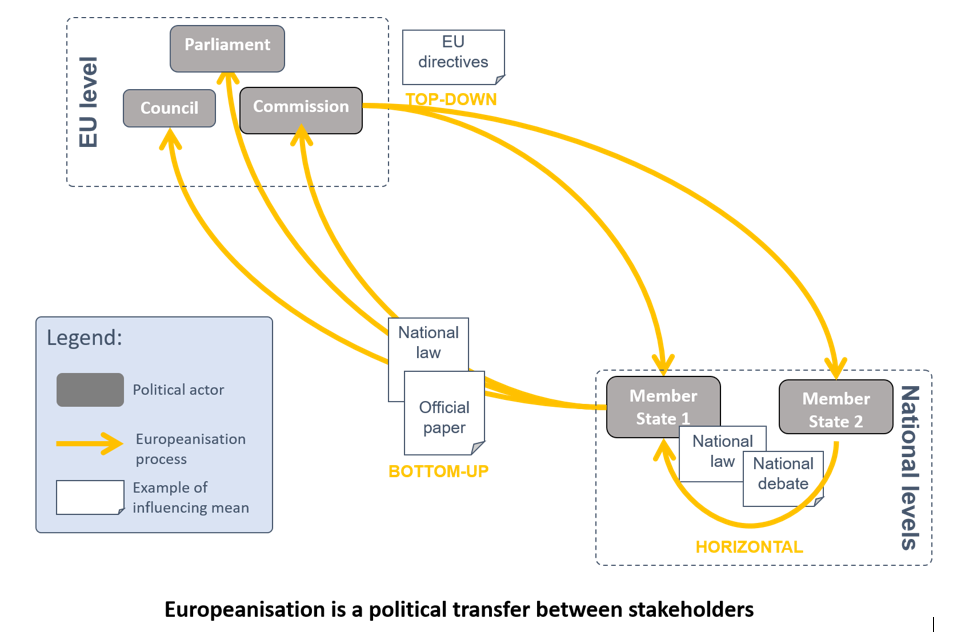Theory
Europeanisation is as a dynamic process of policy transfer under the influence of several actors: European Commission, European Parliament, European Council, the Member States and lobbyists.
How does it work ?
At European level
Policy making is influenced by the power dynamics at EU level between the three main institutions of the EU, i.e. the Commission, the Council, and the Parliament, representing the respective interests of the European “government”, the Member States, and the citizens, approximately – they are the prime movers in the development of European energy policy. The influence game in which the EU institutions (as well as private lobbyist interests) participate falls within the purview of institutional rules that contribute to shape the European energy regulations whether it refers to norms, decrees and directives.
At national level
The implementation of national regulations leads to the transformation of national politics, that in turn modifies its policy and legal framework at the national level. This implementation supports top-down Europeanisation. It corresponds to the downloading of a new set of rules, norms and policies that match more or less with the national political and legal system. The degree of alignment between European regulations and the national political and legal system defines the degree of fit with the EU energy vision. To completely understand the evolution of the Member State national political and legal system, it is necessary to take into account the impact of national regulations – whether developed nationally or copied from other Member State – on the political and legal system. This replicability mechanism refers to the horizontal Europeanisation between two Member States. On their side, Member States have the power to influence EU institutions through the bottom up Europeanisation process.

The national political and legal system is the result of both the transposition of European regulations, and national laws, and it produces results that are perceptible at the energy system level (market and infrastructures).
All Member States are Europeanised, meaning they participate, either in part, or in all, of the process. It is then required to characterize their Europeanisation process to understand the game of power at stake.
| Process of Europeanisation | Characterisation |
|---|---|
| Top-down |
|
| Bottom-up |
|
| Horizontal |
|

